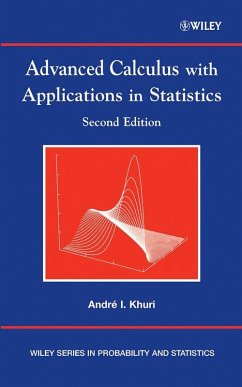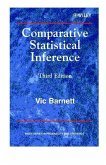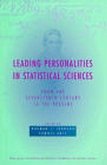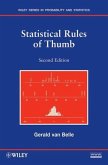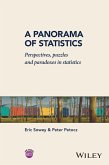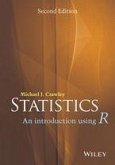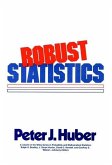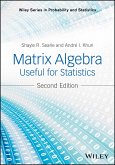André I. Khuri
Advanced Calculus with Applications in Statistics (eBook, PDF)
170,99 €
170,99 €
inkl. MwSt.
Sofort per Download lieferbar

0 °P sammeln
170,99 €
Als Download kaufen

170,99 €
inkl. MwSt.
Sofort per Download lieferbar

0 °P sammeln
Jetzt verschenken
Alle Infos zum eBook verschenken
170,99 €
inkl. MwSt.
Sofort per Download lieferbar
Alle Infos zum eBook verschenken

0 °P sammeln
André I. Khuri
Advanced Calculus with Applications in Statistics (eBook, PDF)
- Format: PDF
- Merkliste
- Auf die Merkliste
- Bewerten Bewerten
- Teilen
- Produkt teilen
- Produkterinnerung
- Produkterinnerung

Bitte loggen Sie sich zunächst in Ihr Kundenkonto ein oder registrieren Sie sich bei
bücher.de, um das eBook-Abo tolino select nutzen zu können.
Hier können Sie sich einloggen
Hier können Sie sich einloggen
Sie sind bereits eingeloggt. Klicken Sie auf 2. tolino select Abo, um fortzufahren.

Bitte loggen Sie sich zunächst in Ihr Kundenkonto ein oder registrieren Sie sich bei bücher.de, um das eBook-Abo tolino select nutzen zu können.
Designed to help motivate the learning of advanced calculus by demonstrating its relevance in the field of statistics, this successful text features detailed coverage of optimization techniques and their applications in statistics while introducing the reader to approximation theory. The Second Edition provides substantial new coverage of the material, including three new chapters and a large appendix that contains solutions to almost all of the exercises in the book. Applications of some of these methods in statistics are discusses.
- Geräte: PC
- mit Kopierschutz
- eBook Hilfe
- Größe: 4.31MB
Andere Kunden interessierten sich auch für
![Comparative Statistical Inference (eBook, PDF) Comparative Statistical Inference (eBook, PDF)]() Vic BarnettComparative Statistical Inference (eBook, PDF)216,99 €
Vic BarnettComparative Statistical Inference (eBook, PDF)216,99 €![Leading Personalities in Statistical Sciences (eBook, PDF) Leading Personalities in Statistical Sciences (eBook, PDF)]() Leading Personalities in Statistical Sciences (eBook, PDF)134,99 €
Leading Personalities in Statistical Sciences (eBook, PDF)134,99 €![Statistical Rules of Thumb (eBook, PDF) Statistical Rules of Thumb (eBook, PDF)]() Gerald Van BelleStatistical Rules of Thumb (eBook, PDF)79,99 €
Gerald Van BelleStatistical Rules of Thumb (eBook, PDF)79,99 €![A Panorama of Statistics (eBook, PDF) A Panorama of Statistics (eBook, PDF)]() Eric SoweyA Panorama of Statistics (eBook, PDF)35,99 €
Eric SoweyA Panorama of Statistics (eBook, PDF)35,99 €![Statistics (eBook, PDF) Statistics (eBook, PDF)]() Michael J. CrawleyStatistics (eBook, PDF)31,99 €
Michael J. CrawleyStatistics (eBook, PDF)31,99 €![Robust Statistics (eBook, PDF) Robust Statistics (eBook, PDF)]() Peter J. HuberRobust Statistics (eBook, PDF)83,99 €
Peter J. HuberRobust Statistics (eBook, PDF)83,99 €![Matrix Algebra Useful for Statistics (eBook, PDF) Matrix Algebra Useful for Statistics (eBook, PDF)]() Shayle R. SearleMatrix Algebra Useful for Statistics (eBook, PDF)108,99 €
Shayle R. SearleMatrix Algebra Useful for Statistics (eBook, PDF)108,99 €-
-
-
Designed to help motivate the learning of advanced calculus by demonstrating its relevance in the field of statistics, this successful text features detailed coverage of optimization techniques and their applications in statistics while introducing the reader to approximation theory. The Second Edition provides substantial new coverage of the material, including three new chapters and a large appendix that contains solutions to almost all of the exercises in the book. Applications of some of these methods in statistics are discusses.
Dieser Download kann aus rechtlichen Gründen nur mit Rechnungsadresse in A, B, BG, CY, CZ, D, DK, EW, E, FIN, F, GR, HR, H, IRL, I, LT, L, LR, M, NL, PL, P, R, S, SLO, SK ausgeliefert werden.
Produktdetails
- Produktdetails
- Verlag: John Wiley & Sons
- Seitenzahl: 704
- Erscheinungstermin: 31. März 2003
- Englisch
- ISBN-13: 9780471461623
- Artikelnr.: 38208370
- Verlag: John Wiley & Sons
- Seitenzahl: 704
- Erscheinungstermin: 31. März 2003
- Englisch
- ISBN-13: 9780471461623
- Artikelnr.: 38208370
- Herstellerkennzeichnung Die Herstellerinformationen sind derzeit nicht verfügbar.
ANDRE I. KHURI, PhD, is a Professor in the Department of Statistics at the University of Florida, Gainesville.
Preface xv Preface to the First Edition xvii 1. An Introduction to Set Theory 1 1.1. The Concept of a Set 1 1.2. Set Operations 2 1.3. Relations and Functions 4 1.4. Finite Countable and Uncountable Sets 6 1.5. Bounded Sets 9 1.6. Some Basic Topological Concepts 10 1.7. Examples in Probability and Statistics 13 Further Reading and Annotated Bibliography 15 Exercises 17 2. Basic Concepts in Linear Algebra 21 2.1. Vector Spaces and Subspaces 21 2.2. Linear Transformations 25 2.3. Matrices and Determinants 27 2.3.1. Basic Operations on Matrices 28 2.3.2. The Rank of a Matrix 33 2.3.3. The Inverse of a Matrix 34 2.3.4. Generalized Inverse of a Matrix 36 2.3.5. Eigenvalues and Eigenvectors of a Matrix 36 2.3.6. Some Special Matrices 38 2.3.7. The Diagonalization of a Matrix 38 2.3.8. Quadratic Forms 39 2.3.9. The Simultaneous Diagonalization of Matrices 40 2.3.10. Bounds on Eigenvalues 41 2.4. Applications of Matrices in Statistics 43 2.4.1. The Analysis of the Balanced Mixed Model 43 2.4.2. The Singular-Value Decomposition 45 2.4.3. Extrema of Quadratic Forms 48 2.4.4. The Parameterization of Orthogonal Matrices 49 Further Reading and Annotated Bibliography 50 Exercises 53 3. Limits and Continuity of Functions 57 3.1. Limits of a Function 57 3.2. Some Properties Associated with Limits of Functions 63 3.3. The o O Notation 65 3.4. Continuous Functions 66 3.4.1. Some Properties of Continuous Functions 71 3.4.2. Lipschitz Continuous Functions 75 3.5. Inverse Functions 76 3.6. Convex Functions 79 3.7. Continuous and Convex Functions in Statistics 82 Further Reading and Annotated Bibliography 87 Exercises 88 4. Differentiation 93 4.1. The Derivative of a Function 93 4.2. The Mean Value Theorem 99 4.3. Taylor's Theorem 108 4.4. Maxima and Minima of a Function 112 4.4.1. A Sufficient Condition for a Local Optimum 114 4.5. Applications in Statistics 115 4.5.1. Functions of Random Variables 116 4.5.2. Approximating Response Functions 121 4.5.3. The Poisson Process 122 4.5.4. Minimizing the Sum of Absolute Deviations 124 Further Reading and Annotated Bibliography 125 Exercises 127 5. Infinite Sequences and Series 132 5.1. Infinite Sequences 132 5.1.1. The Cauchy Criterion 137 5.2. Infinite Series 140 5.2.1. Tests of Convergence for Series of Positive Terms 144 5.2.2. Series of Positive and Negative Terms 158 5.2.3. Rearrangement of Series 159 5.2.4. Multiplication of Series 162 5.3. Sequences and Series of Functions 165 5.3.1. Properties of Uniformly Convergent Sequences and Series 169 5.4. Power Series 174 5.5. Sequences and Series of Matrices 178 5.6. Applications in Statistics 182 5.6.1. Moments of a Discrete Distribution 182 5.6.2. Moment and Probability Generating Functions 186 5.6.3. Some Limit Theorems 191 5.6.3.1. The Weak Law of Large Numbers ?Khinchine's Theorem. 192 5.6.3.2. The Strong Law of Large Numbers ?Kolmogorov's Theorem. 192 5.6.3.3. The Continuity Theorem for Probability Generating Functions 192 5.6.4. Power Series and Logarithmic Series Distributions 193 5.6.5. Poisson Approximation to Power Series Distributions 194 5.6.6. A Ridge Regression Application 195 Further Reading and Annotated Bibliography 197 Exercises 199 6. Integration 205 6.1. Some Basic Definitions 205 6.2. The Existence of the Riemann Integral 206 6.3. Some Classes of Functions That Are Riemann Integrable 210 6.3.1. Functions of Bounded Variation 212 6.4. Properties of the Riemann Integral 215 6.4.1. Change of Variables in Riemann Integration 219 6.5. Improper Riemann Integrals 220 6.5.1. Improper Riemann Integrals of the Second Kind 225 6.6. Convergence of a Sequence of Riemann Integrals 227 6.7. Some Fundamental Inequalities 229 6.7.1. The Cauchy_Schwarz Inequality 229 6.7.2. H
older's Inequality 230 6.7.3. Minkowski's Inequality 232 6.7.4. Jensen's Inequality 233 6.8. Riemann_Stieltjes Integral 234 6.9. Applications in Statistics 239 6.9.1. The Existence of the First Negative Moment of a Continuous Distribution 242 6.9.2. Transformation of Continuous Random Variables 246 6.9.3. The Riemann_Stieltjes Representation of the Expected Value 249 6.9.4. Chebyshev's Inequality 251 Further Reading and Annotated Bibliography 252 Exercises 253 7. Multidimensional Calculus 261 7.1. Some Basic Definitions 261 7.2. Limits of a Multivariable Function 262 7.3. Continuity of a Multivariable Function 264 7.4. Derivatives of a Multivariable Function 267 7.4.1. The Total Derivative 270 7.4.2. Directional Derivatives 273 7.4.3. Differentiation of Composite Functions 276 7.5. Taylor's Theorem for a Multivariable Function 277 7.6. Inverse and Implicit Function Theorems 280 7.7. Optima of a Multivariable Function 283 7.8. The Method of Lagrange Multipliers 288 7.9. The Riemann Integral of a Multivariable Function 293 7.9.1. The Riemann Integral on Cells 294 7.9.2. Iterated Riemann Integrals on Cells 295 7.9.3. Integration over General Sets 297 7.9.4. Change of Variables in n-Tuple Riemann Integrals 299 7.10. Differentiation under the Integral Sign 301 7.11. Applications in Statistics 304 7.11.1. Transformations of Random Vectors 305 7.11.2. Maximum Likelihood Estimation 308 7.11.3. Comparison of Two Unbiased Estimators 310 7.11.4. Best Linear Unbiased Estimation 311 7.11.5. Optimal Choice of Sample Sizes in Stratified Sampling 313 Further Reading and Annotated Bibliography 315 Exercises 316 8. Optimization in Statistics 327 8.1. The Gradient Methods 329 8.1.1. The Method of Steepest Descent 329 8.1.2. The Newton_Raphson Method 331 8.1.3. The Davidon_Fletcher_Powell Method 331 8.2. The Direct Search Methods 332 8.2.1. The Nelder_Mead Simplex Method 332 8.2.2. Price's Controlled Random Search Procedure 336 8.2.3. The Generalized Simulated Annealing Method 338 8.3. Optimization Techniques in Response Surface Methodology 339 8.3.1. The Method of Steepest Ascent 340 8.3.2. The Method of Ridge Analysis 343 8.3.3. Modified Ridge Analysis 350 8.4. Response Surface Designs 355 8.4.1. First-Order Designs 356 8.4.2. Second-Order Designs 358 8.4.3. Variance and Bias Design Criteria 359 8.5. Alphabetic Optimality of Designs 362 8.6. Designs for Nonlinear Models 367 8.7. Multiresponse Optimization 370 8.8. Maximum Likelihood Estimation and the EM Algorithm 372 8.8.1. The EM Algorithm 375 8.9. Minimum Norm Quadratic Unbiased Estimation of Variance Components 378 8.10. Scheff
e's Confidence Intervals 382 8.10.1. The Relation of Scheff
e's Confidence Intervals to the F-Test 385 Further Reading and Annotated Bibliography 391 Exercises 395 9. Approximation of Functions 403 9.1. Weierstrass Approximation 403 9.2. Approximation by Polynomial Interpolation 410 9.2.1. The Accuracy of Lagrange Interpolation 413 9.2.2. A Combination of Interpolation and Approximation 417 9.3. Approximation by Spline Functions 418 9.3.1. Properties of Spline Functions 418 9.3.2. Error Bounds for Spline Approximation 421 9.4. Applications in Statistics 422 9.4.1. Approximate Linearization of Nonlinear Models by Lagrange Interpolation 422 9.4.2. Splines in Statistics 428 9.4.2.1. The Use of Cubic Splines in Regression 428 9.4.2.2. Designs for Fitting Spline Models 430 9.4.2.3. Other Applications of Splines in Statistics 431 Further Reading and Annotated Bibliography 432 Exercises 434 10. Orthogonal Polynomials 437 10.1. Introduction 437 10.2. Legendre Polynomials 440 10.2.1. Expansion of a Function Using Legendre Polynomials 442 10.3. Jacobi Polynomials 443 10.4. Chebyshev Polynomials 444 10.4.1. Chebyshev Polynomials of the First Kind 444 10.4.2. Chebyshev Polynomials of the Second Kind 445 10.5. Hermite Polynomials 447 10.6. Laguerre Polynomials 451 10.7. Least-Squares Approximation with Orthogonal Polynomials 453 10.8. Orthogonal Polynomials Defined on a Finite Set 455 10.9. Applications in Statistics 456 10.9.1. Applications of Hermite Polynomials 456 10.9.1.1. Approximation of Density Functions and Quantiles of Distributions 456 10.9.1.2. Approximation of a Normal Integral 460 10.9.1.3. Estimation of Unknown Densities 461 10.9.2. Applications of Jacobi and Laguerre Polynomials 462 10.9.3. Calculation of Hypergeometric Probabilities Using Discrete Chebyshev Polynomials 462 Further Reading and Annotated Bibliography 464 Exercises 466 11. Fourier Series 471 11.1. Introduction 471 11.2. Convergence of Fourier Series 475 11.3. Differentiation and Integration of Fourier Series 483 11.4. The Fourier Integral 488 11.5. Approximation of Functions by Trigonometric Polynomials 495 11.5.1. Parseval's Theorem 496 11.6. The Fourier Transform 497 11.6.1. Fourier Transform of a Convolution 499 11.7. Applications in Statistics 500 11.7.1. Applications in Time Series 500 11.7.2. Representation of Probability Distributions 501 11.7.3. Regression Modeling 504 11.7.4. The Characteristic Function 505 11.7.4.1. Some Properties of Characteristic Functions 510 Further Reading and Annotated Bibliography 510 Exercises 512 12. Approximation of Integrals 517 12.1. The Trapezoidal Method 517 12.1.1. Accuracy of the Approximation 518 12.2. Simpson's Method 521 12.3. Newton_Cotes Methods 523 12.4. Gaussian Quadrature 524 12.5. Approximation over an Infinite Interval 528 12.6. The Method of Laplace 531 12.7. Multiple Integrals 533 12.8. The Monte Carlo Method 535 12.8.1. Variation Reduction 537 12.8.2. Integrals in Higher Dimensions 540 12.9. Applications in Statistics 541 12.9.1. The Gauss_Hermite Quadrature 542 12.9.2. Minimum Mean Squared Error Quadrature 543 12.9.3. Moments of a Ratio of Quadratic Forms 546 12.9.4. Laplace's Approximation in Bayesian Statistics 548 12.9.5. Other Methods of Approximating Integrals in Statistics 549 Further Reading and Annotated Bibliography 550 Exercises 552 Appendix. Solutions to Selected Exercises 557 General Bibliography 652 Index 665
older's Inequality 230 6.7.3. Minkowski's Inequality 232 6.7.4. Jensen's Inequality 233 6.8. Riemann_Stieltjes Integral 234 6.9. Applications in Statistics 239 6.9.1. The Existence of the First Negative Moment of a Continuous Distribution 242 6.9.2. Transformation of Continuous Random Variables 246 6.9.3. The Riemann_Stieltjes Representation of the Expected Value 249 6.9.4. Chebyshev's Inequality 251 Further Reading and Annotated Bibliography 252 Exercises 253 7. Multidimensional Calculus 261 7.1. Some Basic Definitions 261 7.2. Limits of a Multivariable Function 262 7.3. Continuity of a Multivariable Function 264 7.4. Derivatives of a Multivariable Function 267 7.4.1. The Total Derivative 270 7.4.2. Directional Derivatives 273 7.4.3. Differentiation of Composite Functions 276 7.5. Taylor's Theorem for a Multivariable Function 277 7.6. Inverse and Implicit Function Theorems 280 7.7. Optima of a Multivariable Function 283 7.8. The Method of Lagrange Multipliers 288 7.9. The Riemann Integral of a Multivariable Function 293 7.9.1. The Riemann Integral on Cells 294 7.9.2. Iterated Riemann Integrals on Cells 295 7.9.3. Integration over General Sets 297 7.9.4. Change of Variables in n-Tuple Riemann Integrals 299 7.10. Differentiation under the Integral Sign 301 7.11. Applications in Statistics 304 7.11.1. Transformations of Random Vectors 305 7.11.2. Maximum Likelihood Estimation 308 7.11.3. Comparison of Two Unbiased Estimators 310 7.11.4. Best Linear Unbiased Estimation 311 7.11.5. Optimal Choice of Sample Sizes in Stratified Sampling 313 Further Reading and Annotated Bibliography 315 Exercises 316 8. Optimization in Statistics 327 8.1. The Gradient Methods 329 8.1.1. The Method of Steepest Descent 329 8.1.2. The Newton_Raphson Method 331 8.1.3. The Davidon_Fletcher_Powell Method 331 8.2. The Direct Search Methods 332 8.2.1. The Nelder_Mead Simplex Method 332 8.2.2. Price's Controlled Random Search Procedure 336 8.2.3. The Generalized Simulated Annealing Method 338 8.3. Optimization Techniques in Response Surface Methodology 339 8.3.1. The Method of Steepest Ascent 340 8.3.2. The Method of Ridge Analysis 343 8.3.3. Modified Ridge Analysis 350 8.4. Response Surface Designs 355 8.4.1. First-Order Designs 356 8.4.2. Second-Order Designs 358 8.4.3. Variance and Bias Design Criteria 359 8.5. Alphabetic Optimality of Designs 362 8.6. Designs for Nonlinear Models 367 8.7. Multiresponse Optimization 370 8.8. Maximum Likelihood Estimation and the EM Algorithm 372 8.8.1. The EM Algorithm 375 8.9. Minimum Norm Quadratic Unbiased Estimation of Variance Components 378 8.10. Scheff
e's Confidence Intervals 382 8.10.1. The Relation of Scheff
e's Confidence Intervals to the F-Test 385 Further Reading and Annotated Bibliography 391 Exercises 395 9. Approximation of Functions 403 9.1. Weierstrass Approximation 403 9.2. Approximation by Polynomial Interpolation 410 9.2.1. The Accuracy of Lagrange Interpolation 413 9.2.2. A Combination of Interpolation and Approximation 417 9.3. Approximation by Spline Functions 418 9.3.1. Properties of Spline Functions 418 9.3.2. Error Bounds for Spline Approximation 421 9.4. Applications in Statistics 422 9.4.1. Approximate Linearization of Nonlinear Models by Lagrange Interpolation 422 9.4.2. Splines in Statistics 428 9.4.2.1. The Use of Cubic Splines in Regression 428 9.4.2.2. Designs for Fitting Spline Models 430 9.4.2.3. Other Applications of Splines in Statistics 431 Further Reading and Annotated Bibliography 432 Exercises 434 10. Orthogonal Polynomials 437 10.1. Introduction 437 10.2. Legendre Polynomials 440 10.2.1. Expansion of a Function Using Legendre Polynomials 442 10.3. Jacobi Polynomials 443 10.4. Chebyshev Polynomials 444 10.4.1. Chebyshev Polynomials of the First Kind 444 10.4.2. Chebyshev Polynomials of the Second Kind 445 10.5. Hermite Polynomials 447 10.6. Laguerre Polynomials 451 10.7. Least-Squares Approximation with Orthogonal Polynomials 453 10.8. Orthogonal Polynomials Defined on a Finite Set 455 10.9. Applications in Statistics 456 10.9.1. Applications of Hermite Polynomials 456 10.9.1.1. Approximation of Density Functions and Quantiles of Distributions 456 10.9.1.2. Approximation of a Normal Integral 460 10.9.1.3. Estimation of Unknown Densities 461 10.9.2. Applications of Jacobi and Laguerre Polynomials 462 10.9.3. Calculation of Hypergeometric Probabilities Using Discrete Chebyshev Polynomials 462 Further Reading and Annotated Bibliography 464 Exercises 466 11. Fourier Series 471 11.1. Introduction 471 11.2. Convergence of Fourier Series 475 11.3. Differentiation and Integration of Fourier Series 483 11.4. The Fourier Integral 488 11.5. Approximation of Functions by Trigonometric Polynomials 495 11.5.1. Parseval's Theorem 496 11.6. The Fourier Transform 497 11.6.1. Fourier Transform of a Convolution 499 11.7. Applications in Statistics 500 11.7.1. Applications in Time Series 500 11.7.2. Representation of Probability Distributions 501 11.7.3. Regression Modeling 504 11.7.4. The Characteristic Function 505 11.7.4.1. Some Properties of Characteristic Functions 510 Further Reading and Annotated Bibliography 510 Exercises 512 12. Approximation of Integrals 517 12.1. The Trapezoidal Method 517 12.1.1. Accuracy of the Approximation 518 12.2. Simpson's Method 521 12.3. Newton_Cotes Methods 523 12.4. Gaussian Quadrature 524 12.5. Approximation over an Infinite Interval 528 12.6. The Method of Laplace 531 12.7. Multiple Integrals 533 12.8. The Monte Carlo Method 535 12.8.1. Variation Reduction 537 12.8.2. Integrals in Higher Dimensions 540 12.9. Applications in Statistics 541 12.9.1. The Gauss_Hermite Quadrature 542 12.9.2. Minimum Mean Squared Error Quadrature 543 12.9.3. Moments of a Ratio of Quadratic Forms 546 12.9.4. Laplace's Approximation in Bayesian Statistics 548 12.9.5. Other Methods of Approximating Integrals in Statistics 549 Further Reading and Annotated Bibliography 550 Exercises 552 Appendix. Solutions to Selected Exercises 557 General Bibliography 652 Index 665
Preface xv Preface to the First Edition xvii 1. An Introduction to Set Theory 1 1.1. The Concept of a Set 1 1.2. Set Operations 2 1.3. Relations and Functions 4 1.4. Finite Countable and Uncountable Sets 6 1.5. Bounded Sets 9 1.6. Some Basic Topological Concepts 10 1.7. Examples in Probability and Statistics 13 Further Reading and Annotated Bibliography 15 Exercises 17 2. Basic Concepts in Linear Algebra 21 2.1. Vector Spaces and Subspaces 21 2.2. Linear Transformations 25 2.3. Matrices and Determinants 27 2.3.1. Basic Operations on Matrices 28 2.3.2. The Rank of a Matrix 33 2.3.3. The Inverse of a Matrix 34 2.3.4. Generalized Inverse of a Matrix 36 2.3.5. Eigenvalues and Eigenvectors of a Matrix 36 2.3.6. Some Special Matrices 38 2.3.7. The Diagonalization of a Matrix 38 2.3.8. Quadratic Forms 39 2.3.9. The Simultaneous Diagonalization of Matrices 40 2.3.10. Bounds on Eigenvalues 41 2.4. Applications of Matrices in Statistics 43 2.4.1. The Analysis of the Balanced Mixed Model 43 2.4.2. The Singular-Value Decomposition 45 2.4.3. Extrema of Quadratic Forms 48 2.4.4. The Parameterization of Orthogonal Matrices 49 Further Reading and Annotated Bibliography 50 Exercises 53 3. Limits and Continuity of Functions 57 3.1. Limits of a Function 57 3.2. Some Properties Associated with Limits of Functions 63 3.3. The o O Notation 65 3.4. Continuous Functions 66 3.4.1. Some Properties of Continuous Functions 71 3.4.2. Lipschitz Continuous Functions 75 3.5. Inverse Functions 76 3.6. Convex Functions 79 3.7. Continuous and Convex Functions in Statistics 82 Further Reading and Annotated Bibliography 87 Exercises 88 4. Differentiation 93 4.1. The Derivative of a Function 93 4.2. The Mean Value Theorem 99 4.3. Taylor's Theorem 108 4.4. Maxima and Minima of a Function 112 4.4.1. A Sufficient Condition for a Local Optimum 114 4.5. Applications in Statistics 115 4.5.1. Functions of Random Variables 116 4.5.2. Approximating Response Functions 121 4.5.3. The Poisson Process 122 4.5.4. Minimizing the Sum of Absolute Deviations 124 Further Reading and Annotated Bibliography 125 Exercises 127 5. Infinite Sequences and Series 132 5.1. Infinite Sequences 132 5.1.1. The Cauchy Criterion 137 5.2. Infinite Series 140 5.2.1. Tests of Convergence for Series of Positive Terms 144 5.2.2. Series of Positive and Negative Terms 158 5.2.3. Rearrangement of Series 159 5.2.4. Multiplication of Series 162 5.3. Sequences and Series of Functions 165 5.3.1. Properties of Uniformly Convergent Sequences and Series 169 5.4. Power Series 174 5.5. Sequences and Series of Matrices 178 5.6. Applications in Statistics 182 5.6.1. Moments of a Discrete Distribution 182 5.6.2. Moment and Probability Generating Functions 186 5.6.3. Some Limit Theorems 191 5.6.3.1. The Weak Law of Large Numbers ?Khinchine's Theorem. 192 5.6.3.2. The Strong Law of Large Numbers ?Kolmogorov's Theorem. 192 5.6.3.3. The Continuity Theorem for Probability Generating Functions 192 5.6.4. Power Series and Logarithmic Series Distributions 193 5.6.5. Poisson Approximation to Power Series Distributions 194 5.6.6. A Ridge Regression Application 195 Further Reading and Annotated Bibliography 197 Exercises 199 6. Integration 205 6.1. Some Basic Definitions 205 6.2. The Existence of the Riemann Integral 206 6.3. Some Classes of Functions That Are Riemann Integrable 210 6.3.1. Functions of Bounded Variation 212 6.4. Properties of the Riemann Integral 215 6.4.1. Change of Variables in Riemann Integration 219 6.5. Improper Riemann Integrals 220 6.5.1. Improper Riemann Integrals of the Second Kind 225 6.6. Convergence of a Sequence of Riemann Integrals 227 6.7. Some Fundamental Inequalities 229 6.7.1. The Cauchy_Schwarz Inequality 229 6.7.2. H
older's Inequality 230 6.7.3. Minkowski's Inequality 232 6.7.4. Jensen's Inequality 233 6.8. Riemann_Stieltjes Integral 234 6.9. Applications in Statistics 239 6.9.1. The Existence of the First Negative Moment of a Continuous Distribution 242 6.9.2. Transformation of Continuous Random Variables 246 6.9.3. The Riemann_Stieltjes Representation of the Expected Value 249 6.9.4. Chebyshev's Inequality 251 Further Reading and Annotated Bibliography 252 Exercises 253 7. Multidimensional Calculus 261 7.1. Some Basic Definitions 261 7.2. Limits of a Multivariable Function 262 7.3. Continuity of a Multivariable Function 264 7.4. Derivatives of a Multivariable Function 267 7.4.1. The Total Derivative 270 7.4.2. Directional Derivatives 273 7.4.3. Differentiation of Composite Functions 276 7.5. Taylor's Theorem for a Multivariable Function 277 7.6. Inverse and Implicit Function Theorems 280 7.7. Optima of a Multivariable Function 283 7.8. The Method of Lagrange Multipliers 288 7.9. The Riemann Integral of a Multivariable Function 293 7.9.1. The Riemann Integral on Cells 294 7.9.2. Iterated Riemann Integrals on Cells 295 7.9.3. Integration over General Sets 297 7.9.4. Change of Variables in n-Tuple Riemann Integrals 299 7.10. Differentiation under the Integral Sign 301 7.11. Applications in Statistics 304 7.11.1. Transformations of Random Vectors 305 7.11.2. Maximum Likelihood Estimation 308 7.11.3. Comparison of Two Unbiased Estimators 310 7.11.4. Best Linear Unbiased Estimation 311 7.11.5. Optimal Choice of Sample Sizes in Stratified Sampling 313 Further Reading and Annotated Bibliography 315 Exercises 316 8. Optimization in Statistics 327 8.1. The Gradient Methods 329 8.1.1. The Method of Steepest Descent 329 8.1.2. The Newton_Raphson Method 331 8.1.3. The Davidon_Fletcher_Powell Method 331 8.2. The Direct Search Methods 332 8.2.1. The Nelder_Mead Simplex Method 332 8.2.2. Price's Controlled Random Search Procedure 336 8.2.3. The Generalized Simulated Annealing Method 338 8.3. Optimization Techniques in Response Surface Methodology 339 8.3.1. The Method of Steepest Ascent 340 8.3.2. The Method of Ridge Analysis 343 8.3.3. Modified Ridge Analysis 350 8.4. Response Surface Designs 355 8.4.1. First-Order Designs 356 8.4.2. Second-Order Designs 358 8.4.3. Variance and Bias Design Criteria 359 8.5. Alphabetic Optimality of Designs 362 8.6. Designs for Nonlinear Models 367 8.7. Multiresponse Optimization 370 8.8. Maximum Likelihood Estimation and the EM Algorithm 372 8.8.1. The EM Algorithm 375 8.9. Minimum Norm Quadratic Unbiased Estimation of Variance Components 378 8.10. Scheff
e's Confidence Intervals 382 8.10.1. The Relation of Scheff
e's Confidence Intervals to the F-Test 385 Further Reading and Annotated Bibliography 391 Exercises 395 9. Approximation of Functions 403 9.1. Weierstrass Approximation 403 9.2. Approximation by Polynomial Interpolation 410 9.2.1. The Accuracy of Lagrange Interpolation 413 9.2.2. A Combination of Interpolation and Approximation 417 9.3. Approximation by Spline Functions 418 9.3.1. Properties of Spline Functions 418 9.3.2. Error Bounds for Spline Approximation 421 9.4. Applications in Statistics 422 9.4.1. Approximate Linearization of Nonlinear Models by Lagrange Interpolation 422 9.4.2. Splines in Statistics 428 9.4.2.1. The Use of Cubic Splines in Regression 428 9.4.2.2. Designs for Fitting Spline Models 430 9.4.2.3. Other Applications of Splines in Statistics 431 Further Reading and Annotated Bibliography 432 Exercises 434 10. Orthogonal Polynomials 437 10.1. Introduction 437 10.2. Legendre Polynomials 440 10.2.1. Expansion of a Function Using Legendre Polynomials 442 10.3. Jacobi Polynomials 443 10.4. Chebyshev Polynomials 444 10.4.1. Chebyshev Polynomials of the First Kind 444 10.4.2. Chebyshev Polynomials of the Second Kind 445 10.5. Hermite Polynomials 447 10.6. Laguerre Polynomials 451 10.7. Least-Squares Approximation with Orthogonal Polynomials 453 10.8. Orthogonal Polynomials Defined on a Finite Set 455 10.9. Applications in Statistics 456 10.9.1. Applications of Hermite Polynomials 456 10.9.1.1. Approximation of Density Functions and Quantiles of Distributions 456 10.9.1.2. Approximation of a Normal Integral 460 10.9.1.3. Estimation of Unknown Densities 461 10.9.2. Applications of Jacobi and Laguerre Polynomials 462 10.9.3. Calculation of Hypergeometric Probabilities Using Discrete Chebyshev Polynomials 462 Further Reading and Annotated Bibliography 464 Exercises 466 11. Fourier Series 471 11.1. Introduction 471 11.2. Convergence of Fourier Series 475 11.3. Differentiation and Integration of Fourier Series 483 11.4. The Fourier Integral 488 11.5. Approximation of Functions by Trigonometric Polynomials 495 11.5.1. Parseval's Theorem 496 11.6. The Fourier Transform 497 11.6.1. Fourier Transform of a Convolution 499 11.7. Applications in Statistics 500 11.7.1. Applications in Time Series 500 11.7.2. Representation of Probability Distributions 501 11.7.3. Regression Modeling 504 11.7.4. The Characteristic Function 505 11.7.4.1. Some Properties of Characteristic Functions 510 Further Reading and Annotated Bibliography 510 Exercises 512 12. Approximation of Integrals 517 12.1. The Trapezoidal Method 517 12.1.1. Accuracy of the Approximation 518 12.2. Simpson's Method 521 12.3. Newton_Cotes Methods 523 12.4. Gaussian Quadrature 524 12.5. Approximation over an Infinite Interval 528 12.6. The Method of Laplace 531 12.7. Multiple Integrals 533 12.8. The Monte Carlo Method 535 12.8.1. Variation Reduction 537 12.8.2. Integrals in Higher Dimensions 540 12.9. Applications in Statistics 541 12.9.1. The Gauss_Hermite Quadrature 542 12.9.2. Minimum Mean Squared Error Quadrature 543 12.9.3. Moments of a Ratio of Quadratic Forms 546 12.9.4. Laplace's Approximation in Bayesian Statistics 548 12.9.5. Other Methods of Approximating Integrals in Statistics 549 Further Reading and Annotated Bibliography 550 Exercises 552 Appendix. Solutions to Selected Exercises 557 General Bibliography 652 Index 665
older's Inequality 230 6.7.3. Minkowski's Inequality 232 6.7.4. Jensen's Inequality 233 6.8. Riemann_Stieltjes Integral 234 6.9. Applications in Statistics 239 6.9.1. The Existence of the First Negative Moment of a Continuous Distribution 242 6.9.2. Transformation of Continuous Random Variables 246 6.9.3. The Riemann_Stieltjes Representation of the Expected Value 249 6.9.4. Chebyshev's Inequality 251 Further Reading and Annotated Bibliography 252 Exercises 253 7. Multidimensional Calculus 261 7.1. Some Basic Definitions 261 7.2. Limits of a Multivariable Function 262 7.3. Continuity of a Multivariable Function 264 7.4. Derivatives of a Multivariable Function 267 7.4.1. The Total Derivative 270 7.4.2. Directional Derivatives 273 7.4.3. Differentiation of Composite Functions 276 7.5. Taylor's Theorem for a Multivariable Function 277 7.6. Inverse and Implicit Function Theorems 280 7.7. Optima of a Multivariable Function 283 7.8. The Method of Lagrange Multipliers 288 7.9. The Riemann Integral of a Multivariable Function 293 7.9.1. The Riemann Integral on Cells 294 7.9.2. Iterated Riemann Integrals on Cells 295 7.9.3. Integration over General Sets 297 7.9.4. Change of Variables in n-Tuple Riemann Integrals 299 7.10. Differentiation under the Integral Sign 301 7.11. Applications in Statistics 304 7.11.1. Transformations of Random Vectors 305 7.11.2. Maximum Likelihood Estimation 308 7.11.3. Comparison of Two Unbiased Estimators 310 7.11.4. Best Linear Unbiased Estimation 311 7.11.5. Optimal Choice of Sample Sizes in Stratified Sampling 313 Further Reading and Annotated Bibliography 315 Exercises 316 8. Optimization in Statistics 327 8.1. The Gradient Methods 329 8.1.1. The Method of Steepest Descent 329 8.1.2. The Newton_Raphson Method 331 8.1.3. The Davidon_Fletcher_Powell Method 331 8.2. The Direct Search Methods 332 8.2.1. The Nelder_Mead Simplex Method 332 8.2.2. Price's Controlled Random Search Procedure 336 8.2.3. The Generalized Simulated Annealing Method 338 8.3. Optimization Techniques in Response Surface Methodology 339 8.3.1. The Method of Steepest Ascent 340 8.3.2. The Method of Ridge Analysis 343 8.3.3. Modified Ridge Analysis 350 8.4. Response Surface Designs 355 8.4.1. First-Order Designs 356 8.4.2. Second-Order Designs 358 8.4.3. Variance and Bias Design Criteria 359 8.5. Alphabetic Optimality of Designs 362 8.6. Designs for Nonlinear Models 367 8.7. Multiresponse Optimization 370 8.8. Maximum Likelihood Estimation and the EM Algorithm 372 8.8.1. The EM Algorithm 375 8.9. Minimum Norm Quadratic Unbiased Estimation of Variance Components 378 8.10. Scheff
e's Confidence Intervals 382 8.10.1. The Relation of Scheff
e's Confidence Intervals to the F-Test 385 Further Reading and Annotated Bibliography 391 Exercises 395 9. Approximation of Functions 403 9.1. Weierstrass Approximation 403 9.2. Approximation by Polynomial Interpolation 410 9.2.1. The Accuracy of Lagrange Interpolation 413 9.2.2. A Combination of Interpolation and Approximation 417 9.3. Approximation by Spline Functions 418 9.3.1. Properties of Spline Functions 418 9.3.2. Error Bounds for Spline Approximation 421 9.4. Applications in Statistics 422 9.4.1. Approximate Linearization of Nonlinear Models by Lagrange Interpolation 422 9.4.2. Splines in Statistics 428 9.4.2.1. The Use of Cubic Splines in Regression 428 9.4.2.2. Designs for Fitting Spline Models 430 9.4.2.3. Other Applications of Splines in Statistics 431 Further Reading and Annotated Bibliography 432 Exercises 434 10. Orthogonal Polynomials 437 10.1. Introduction 437 10.2. Legendre Polynomials 440 10.2.1. Expansion of a Function Using Legendre Polynomials 442 10.3. Jacobi Polynomials 443 10.4. Chebyshev Polynomials 444 10.4.1. Chebyshev Polynomials of the First Kind 444 10.4.2. Chebyshev Polynomials of the Second Kind 445 10.5. Hermite Polynomials 447 10.6. Laguerre Polynomials 451 10.7. Least-Squares Approximation with Orthogonal Polynomials 453 10.8. Orthogonal Polynomials Defined on a Finite Set 455 10.9. Applications in Statistics 456 10.9.1. Applications of Hermite Polynomials 456 10.9.1.1. Approximation of Density Functions and Quantiles of Distributions 456 10.9.1.2. Approximation of a Normal Integral 460 10.9.1.3. Estimation of Unknown Densities 461 10.9.2. Applications of Jacobi and Laguerre Polynomials 462 10.9.3. Calculation of Hypergeometric Probabilities Using Discrete Chebyshev Polynomials 462 Further Reading and Annotated Bibliography 464 Exercises 466 11. Fourier Series 471 11.1. Introduction 471 11.2. Convergence of Fourier Series 475 11.3. Differentiation and Integration of Fourier Series 483 11.4. The Fourier Integral 488 11.5. Approximation of Functions by Trigonometric Polynomials 495 11.5.1. Parseval's Theorem 496 11.6. The Fourier Transform 497 11.6.1. Fourier Transform of a Convolution 499 11.7. Applications in Statistics 500 11.7.1. Applications in Time Series 500 11.7.2. Representation of Probability Distributions 501 11.7.3. Regression Modeling 504 11.7.4. The Characteristic Function 505 11.7.4.1. Some Properties of Characteristic Functions 510 Further Reading and Annotated Bibliography 510 Exercises 512 12. Approximation of Integrals 517 12.1. The Trapezoidal Method 517 12.1.1. Accuracy of the Approximation 518 12.2. Simpson's Method 521 12.3. Newton_Cotes Methods 523 12.4. Gaussian Quadrature 524 12.5. Approximation over an Infinite Interval 528 12.6. The Method of Laplace 531 12.7. Multiple Integrals 533 12.8. The Monte Carlo Method 535 12.8.1. Variation Reduction 537 12.8.2. Integrals in Higher Dimensions 540 12.9. Applications in Statistics 541 12.9.1. The Gauss_Hermite Quadrature 542 12.9.2. Minimum Mean Squared Error Quadrature 543 12.9.3. Moments of a Ratio of Quadratic Forms 546 12.9.4. Laplace's Approximation in Bayesian Statistics 548 12.9.5. Other Methods of Approximating Integrals in Statistics 549 Further Reading and Annotated Bibliography 550 Exercises 552 Appendix. Solutions to Selected Exercises 557 General Bibliography 652 Index 665
